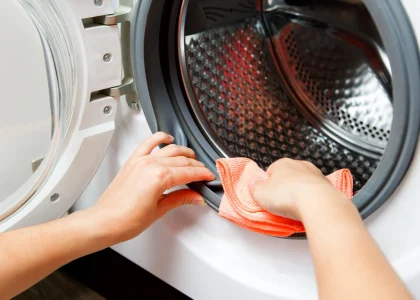
In 2023, the men’s skincare products market is projected to be valued at US$ 15,078.23 million, with forecasts indicating a substantial increase to US$ 37,000 million by 2033. Anticipated to progress at a Compound Annual Growth Rate (CAGR) of 9.4% throughout the forecast period, this growth reflects the increasing acceptance and demand for skincare products among men. Factors such as changing grooming trends, heightened awareness of skincare, and evolving societal norms contribute to the market’s steady expansion. As men prioritize self-care and grooming routines, the skincare industry presents lucrative opportunities for brands to cater to this growing demographic.
One of the major drivers is increased consciousness among the men regarding need for self-care and grooming. A new revolution of liberated masculinity has obliterated old-fashioned notions which resulted in men adopting complex regimes for their skincare.
And now, men are proactively looking for the best men’s skincare products designed by their specific needs that is as effective a face wash provides rejuvenation to kick-start your day. A moisturizer ensures healthy skin glow and sunscreen protects from environmental aggressors.
Request a Sample Report and Explore New Growth Opportunities Now! https://www.futuremarketinsights.com/reports/sample/rep-gb-8283
Growth Drivers:
- Increasing Awareness and Acceptance: There has been a notable shift in societal attitudes towards skincare among men. Increasing awareness of skincare routines and the benefits of proper skincare has led to greater acceptance and adoption of skincare products among men.
- Changing Lifestyle and Grooming Trends: With changing lifestyle patterns and evolving grooming trends, men are becoming more conscious about their appearance and grooming habits. This has led to a growing demand for skincare products tailored specifically for men.
- Rise in Disposable Income: Economic prosperity and rising disposable incomes in many regions have enabled men to spend more on personal care products, including skincare items. As men become more financially empowered, they are willing to invest in higher-quality skincare products.
- Product Innovation and Diversification: Skincare companies are continuously innovating and diversifying their product offerings to cater to the specific needs and preferences of male consumers. This includes the development of products targeting issues like shaving irritation, acne, aging, and sun protection.
- Celebrity Endorsements and Influencer Marketing: Endorsements by male celebrities and influencers, along with effective marketing campaigns targeting male audiences, have played a significant role in driving awareness and demand for men’s skincare products.
Industry Restraints:
- Traditional Gender Stereotypes: Despite changing attitudes, traditional gender stereotypes still persist in some regions and demographics. Some men may feel reluctant or embarrassed to openly embrace skincare routines due to societal expectations or perceived notions of masculinity.
- Limited Product Knowledge: Compared to women, men generally have less exposure to skincare products and routines. This lack of knowledge can be a barrier to entry, as men may be unsure about which products are suitable for their specific skin types and concerns.
- Price Sensitivity: Price sensitivity remains a challenge in the men’s skincare market, particularly for premium or luxury products. Men may be hesitant to invest in expensive skincare items or may opt for lower-priced alternatives, impacting sales of high-end products.
- Availability of Affordable Alternatives: With the proliferation of affordable skincare options in the market, men may choose budget-friendly alternatives over specialized men’s skincare products. This intensifies competition and places pressure on companies to offer competitive pricing without compromising on quality.
- Regulatory Hurdles: Compliance with regulations and standards in different regions can pose challenges for companies operating in the men’s skincare market. Meeting regulatory requirements regarding product safety, labeling, and ingredient restrictions adds complexity to product development and distribution.
Key Takeaways – Men’s Skincare Products Market
- In 2021, ~37% of the world’s skincare products were launched in the U.K., followed by the U.S. with ~25%, and France, close to ~15%.
- Europe will hold significant shares in men’s skincare products market owing to the exceedingly high concentration of beauty & skincare manufacturers in the region.
- East Asia will be a lucrative investment pocket for companies in the men’s skincare products landscape, as the J-beauty and K-beauty cosmetic trends are proliferating in this region at a pace.
- High demand for organic products will be one of the key attributes complementing global men’s skincare products market growth.
- Oily skin issues in men remain the top revenue generator, whereas issues with sensitive skin are hinting at a rapidly emerging category to invest in.
- Online retail would be the significantly profitable sales channel.
The men’s skincare market is exploding, leaving behind its dusty image for a full-fledged renaissance. This isn’t just a blip – it’s a sustained surge in demand, rewriting the rules of men’s grooming and self-care. Gone are the days of rough aftershave and stoic silence about blemishes; today’s men are confidently wielding serums, moisturizers, and even masks, fueled by several key factors:
Shifting Priorities: Men are prioritizing well-being like never before, realizing self-care isn’t just vanity but an investment in confidence and health. Skin concerns like pollution damage, aging, and dryness are no longer taboo, and men are actively seeking solutions through tailored skincare routines.
Product Explosion: The market is no longer a desert of basic aftershave balms. It’s a flourishing oasis offering a dizzying array of products for specific needs and skin types. Acne? There’s a serum for that. Oily skin? Meet your new mattifying moisturizer. Wrinkles? Hello, anti-aging cream. This diversification empowers men to find their perfect personalized routine.
Social Currency: Online platforms and communities are creating a safe space for men to share skincare tips, discuss experiences, and discover new products. This peer-to-peer influence amplifies the demand for effective and innovative solutions.
Challenges & Opportunities: While navigating choices and overcoming lingering stigmas exist, the opportunities are immense. Expect to see even more targeted products, personalized recommendations via AI and digital tools, and tech-driven innovations like smart skincare devices.
key Players:
- Procter & Gamble plc
- Beiersdorf AG
- Johnson & Johnson Services Inc.
- Estee Lauder Companies
- L’Oréal S.A
- Unilever PLC
- Clarins Group
- Chattem Inc.
- Clinique Laboratories
- Kiehl’s LLC
- Susanne Kaufmann Company
- Lancôme Company
- Galderma Laboratories L.P.
- Aveda Corporation
- Emami Limited
- Dr. Bronner’s Company
- Scotch Porter Company
- Maapilim Company
- Brickell Men’s Products Company
- Menaji Worldwide LLC
Buy Now/Purchase @ https://www.futuremarketinsights.com/checkout/8283
Market Segmentation
By Product Type:
- Cleansers & Face Wash
- Moisturizers & Creams
- Serums, Oils, & Treatment
- Shave Care
- Shaving Cream
- Shaving Foam/Gel
- After Shave Lotion
- After Shave Splash/Gel
- After Shave Balm
- Other shaving Products
- Sunscreen
- Facial Scrubs & Polishes
- Others
By Skin Type:
- Oily Skin
- Dry Skin
- Sensitive Skin
- Combination Skin
- Normal Skin
By Price Range:
- Economy
- Mid-Range
- Premium
By Source:
- Organic
- Conventional
By Sales Channel:
- Supermarkets/Hypermarkets
- Specialty Stores
- Multi-Brand Stores
- Discount Stores
- Salon/Grooming Clubs
- Drug Stores & Pharmacies
- Online Retailers
- Other Sales Channel
Author
Sneha Varghese (Senior Consultant, Consumer Products & Goods) has 6+ years of experience in the market research and consulting industry. She has worked on 200+ research assignments pertaining to Consumer Retail Goods.
Her work is primarily focused on facilitating strategic decisions, planning and managing cross-functional business operations, technology projects, and driving successful implementations. She has helped create insightful, relevant analysis of Food & Beverage market reports and studies that include consumer market, retail, and manufacturer research perspective. She has also been involved in several bulletins in food magazines and journals.
About Future Market Insights (FMI)
Future Market Insights, Inc. (ESOMAR certified, recipient of the Stevie Award, and a member of the Greater New York Chamber of Commerce) offers profound insights into the driving factors that are boosting demand in the market. FMI stands as the leading global provider of market intelligence, advisory services, consulting, and events for the Packaging, Food and Beverage, Consumer, Technology, Healthcare, Industrial, and Chemicals markets. With a vast team of ~400 analysts worldwide, FMI provides global, regional, and local expertise on diverse domains and industry trends across more than 110 countries.
Contact Us:
Future Market Insights Inc.
Christiana Corporate, 200 Continental Drive,
Suite 401, Newark, Delaware – 19713, USA
T: +1-845-579-5705
For Sales Enquiries: sales@futuremarketinsights.com
Website: https://www.futuremarketinsights.com
LinkedIn| Twitter| Blogs | YouTube




